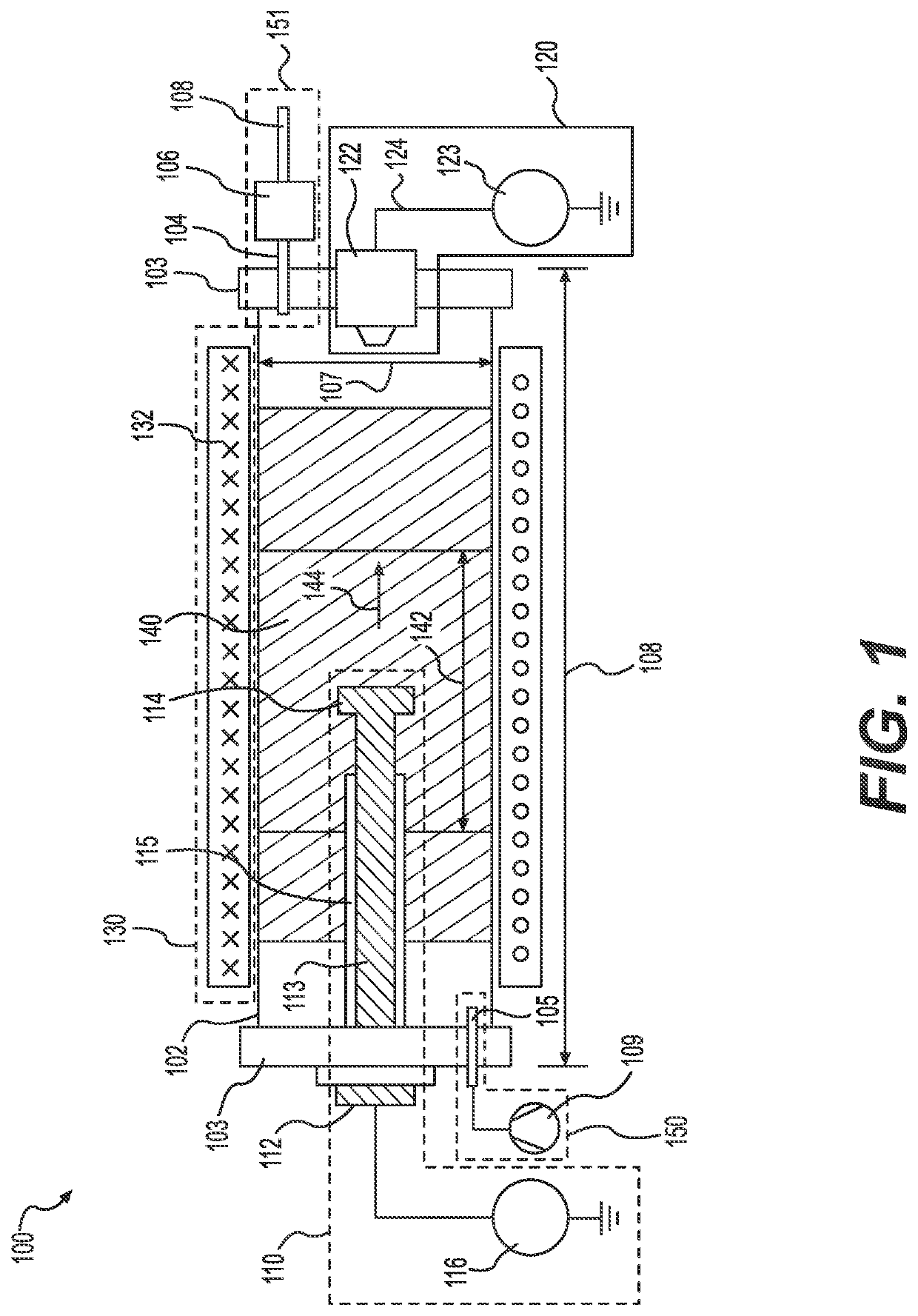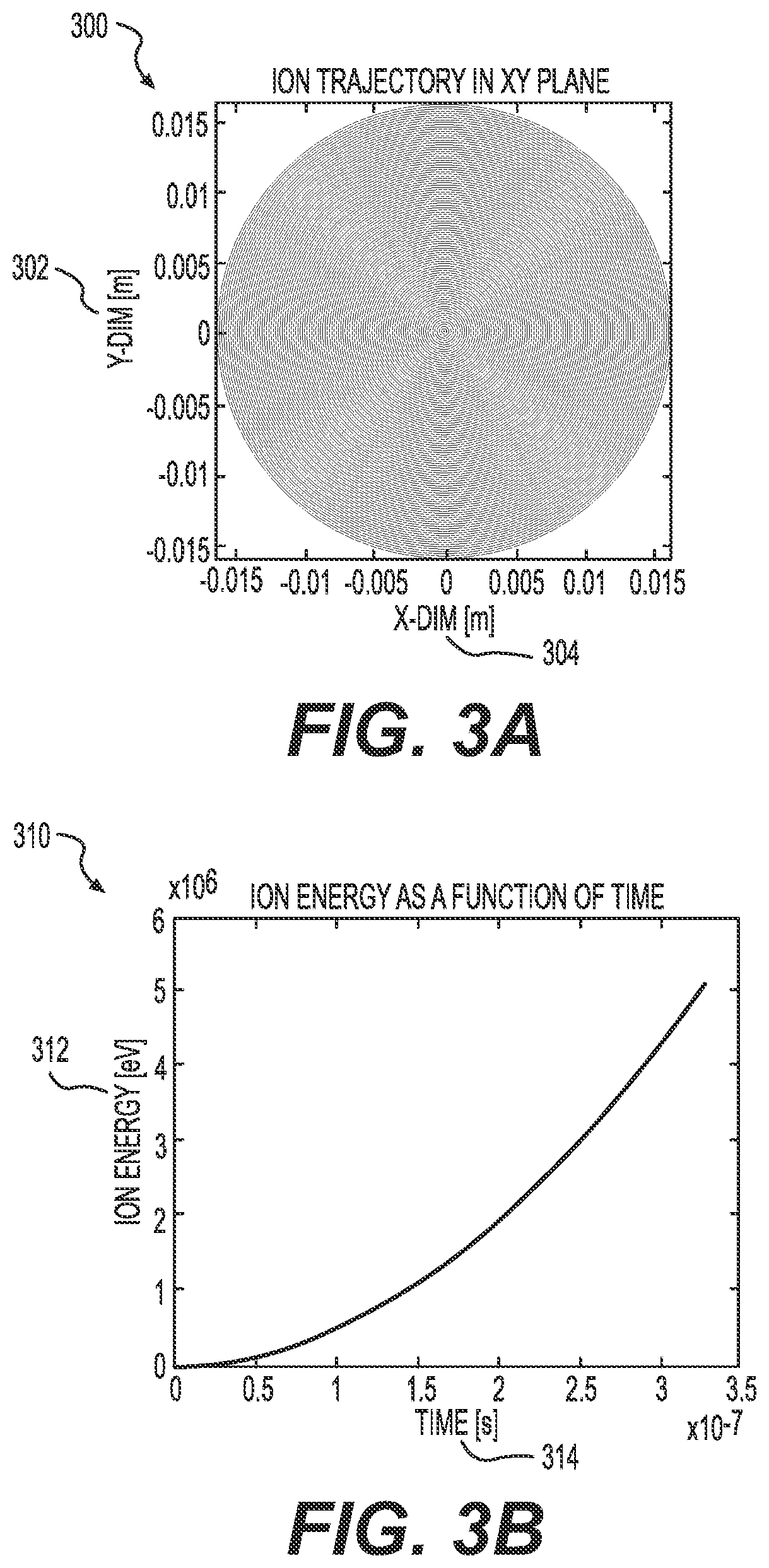Electron and ion cyclotron resonance enabled fusion reactors
a fusion reactor and ion cyclotron technology, applied in the field of ion cyclotron resonance and electron cyclotron resonance, to achieve the effect of commercially viable fusion reaction, effective scaling of power generation, and net positive energy production
- Summary
- Abstract
- Description
- Claims
- Application Information
AI Technical Summary
Benefits of technology
Problems solved by technology
Method used
Image
Examples
embodiment
Dusty Plasma Embodiment
[0062]FIG. 12 is a cross-sectional view of an ECR / ICR enabled cylindrical fusion reactor 1200 with a superconducting magnet coil 132 using dusty plasma 1102 for fusion reactions. In this embodiment the dusty plasma contains ions 1104 and LaB6 macroparticles 1202.
[0063]Advantageously, the particles 1202 can act like “collisionless particles” whose orbits are not affected by collisions with neutrals or ions because of the differences in masses. These particles with charges only at their surfaces remain neutral in the bulk and can be driven by the Lorentz force. In some embodiments, a particle comprising thermionic materials is also an electron emitter. Therefore, the particle comprises the necessary reactants for proton-boron fusion (e.g., LaB6), in addition to a collection of free electrons created by thermionic emission. The free electrons at the surface of the particles screen the electrostatic repulsion between the fusion reactants, increasing the probabilit...
PUM
| Property | Measurement | Unit |
|---|---|---|
| frequency | aaaaa | aaaaa |
| frequency | aaaaa | aaaaa |
| temperatures | aaaaa | aaaaa |
Abstract
Description
Claims
Application Information
 Login to View More
Login to View More - R&D
- Intellectual Property
- Life Sciences
- Materials
- Tech Scout
- Unparalleled Data Quality
- Higher Quality Content
- 60% Fewer Hallucinations
Browse by: Latest US Patents, China's latest patents, Technical Efficacy Thesaurus, Application Domain, Technology Topic, Popular Technical Reports.
© 2025 PatSnap. All rights reserved.Legal|Privacy policy|Modern Slavery Act Transparency Statement|Sitemap|About US| Contact US: help@patsnap.com



